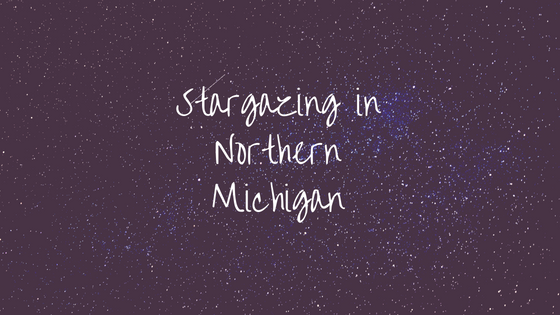Tips for Stargazing in Northern Michigan
The aurora borealis, or northern lights, visible at night in Northern Michigan from late summer through late winter, is one of the many highlights of stargazing in our region.
The beautiful display is created when space particles hit Earth’s atmosphere and is certainly a treat to see.
The Northern Lights tend to be most visible beginning in late winter because this is when the night sky tends to be darkest. The darkest nights are, of course, the best for viewing, but prepare yourself to stay up late, this might mean being outdoors well past midnight.
For the best view, you will have to stay up late and make sure you are in an area free of light pollution, which includes not only outdoor motion sensor lights, or the glow from streetlights, but also handheld lights like a smartphone or a watch face that glows in the dark.

Due to the unseasonable cold weather in northern Michigan, many stargazers limit their night watching to the warmer weather but don’t be frightened off by the cold. The Aurora conditions are sometimes most conducive in late winter or late fall, when temperatures can range from just above freezing to single digits. A comfortable sweater or heavy jacket, depending on nighttime lows, can ward off any need to abandon plans.
My favorite places to star watch is along the shoreline stretching north of Harbor Springs toward Sturgeon Bay, or south between Petoskey and Charlevoix. Sometimes, however, the darkest spots are inland, among the trees and other cover that helps gobble up light pollution.
Farther from home, Pictured Rocks National Lakeshore west of Grand Marais in the Upper Peninsula is perfect for night viewing, as is Sleeping Bear National Lakeshore near Empire. Both locations offer dark surroundings, as well as skies wide enough to invite the full impact of northern star watching.
Pay attention to the lunar cycle too, because while the moon is often the easiest star in the sky to identify, it can also make focusing on other celestial lights more challenging.
If you’re still wondering what you’re looking at when you turn skyward, find a useful star map, like those from www.skymaponline.net or www.stargazing.net. There is no sense confusing the Sirius with the Pleiades.
In the end, all you really need is a dark backyard, a comfortable blanket, and a bit of unfettered time, once the stars come out.




